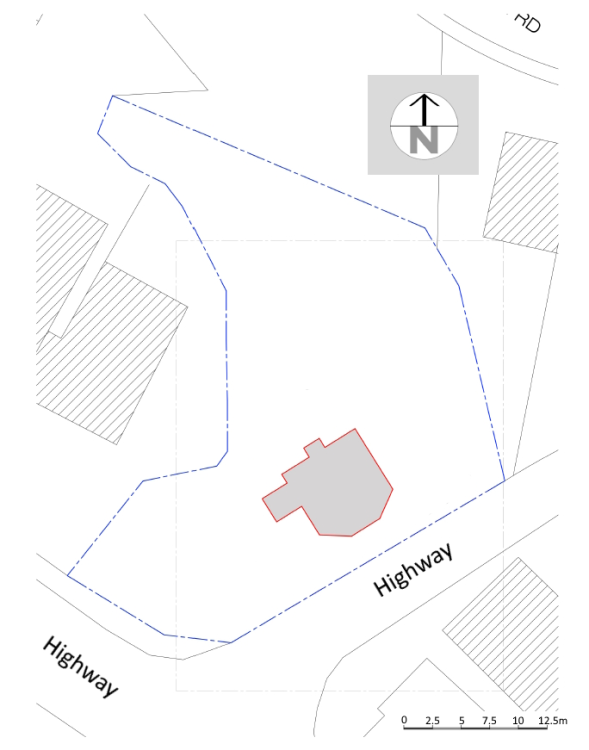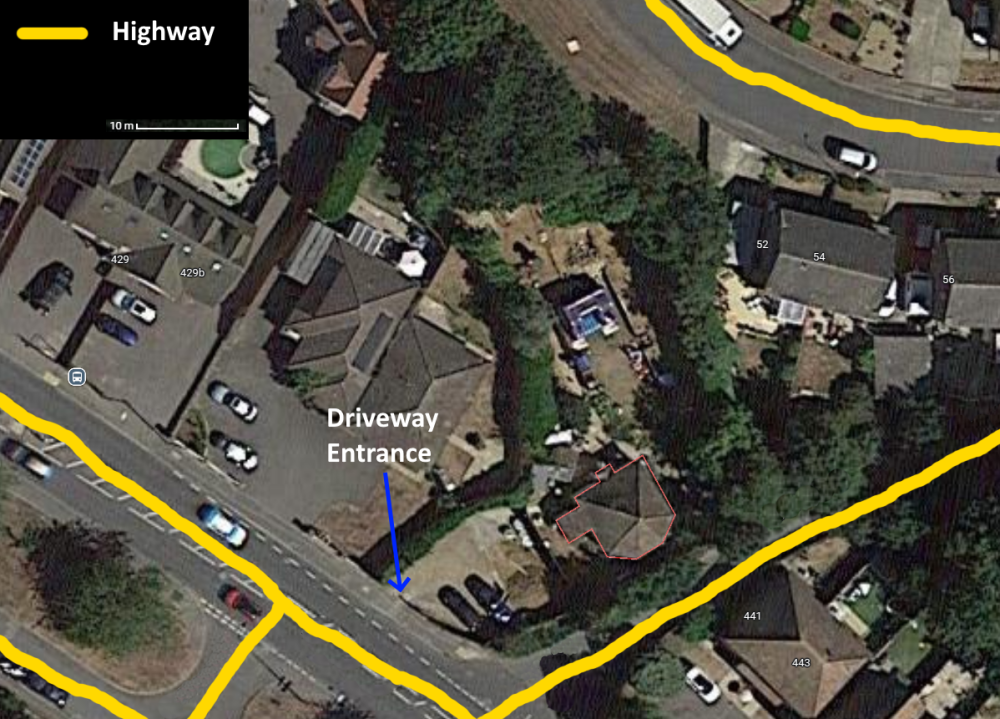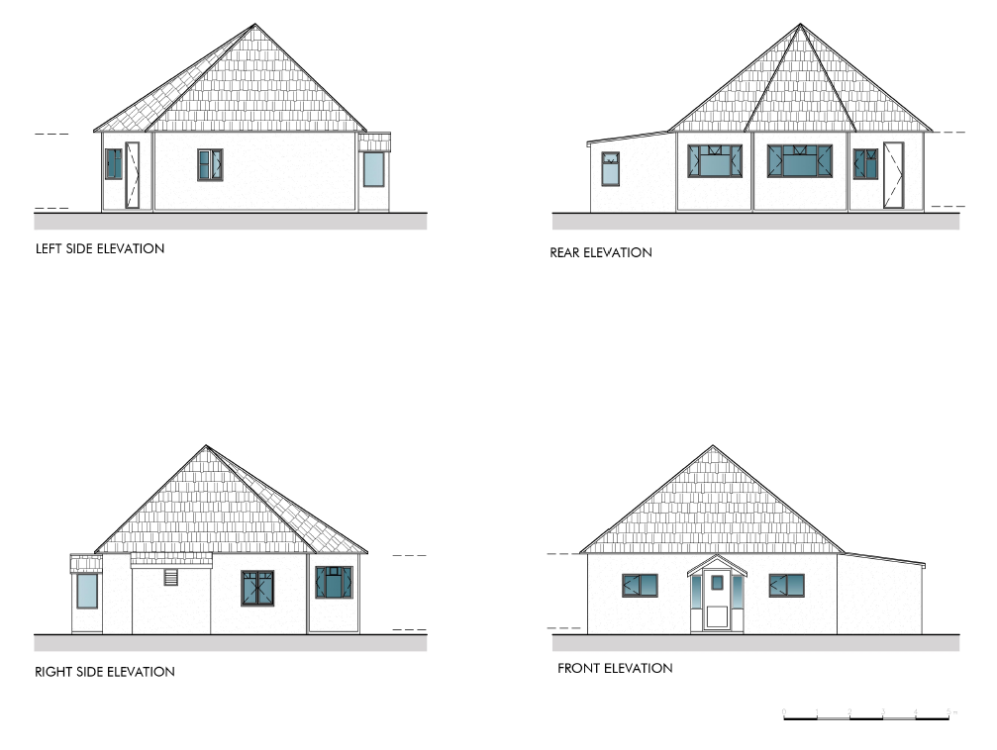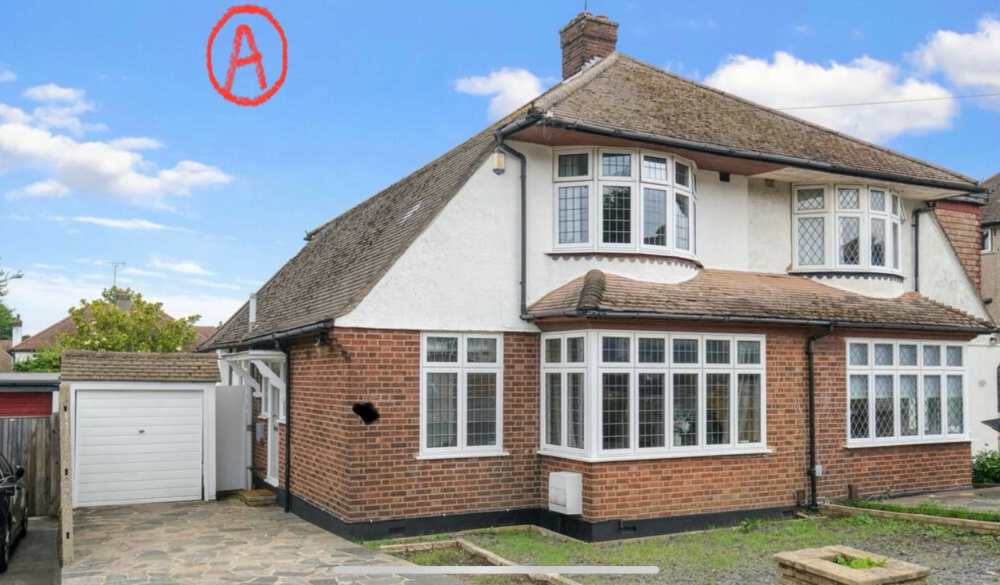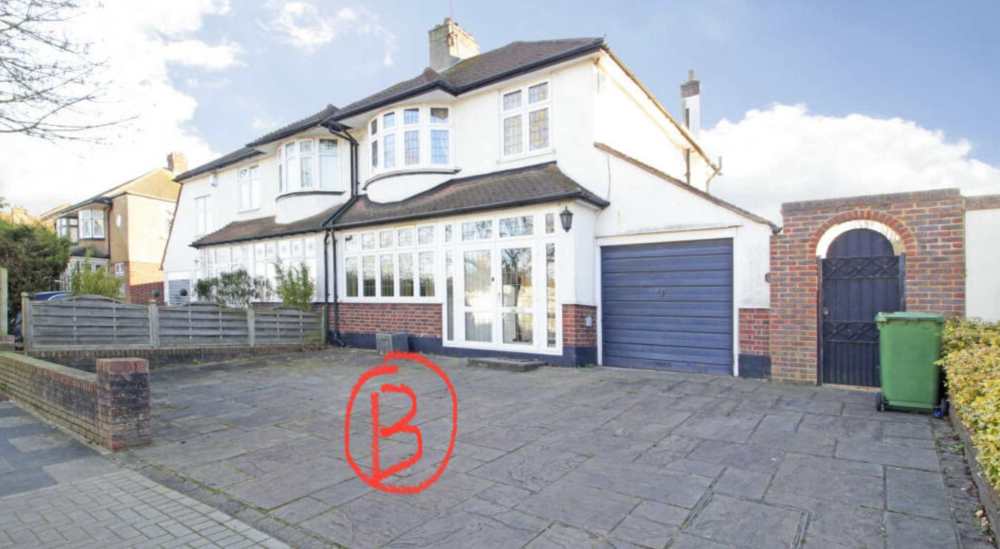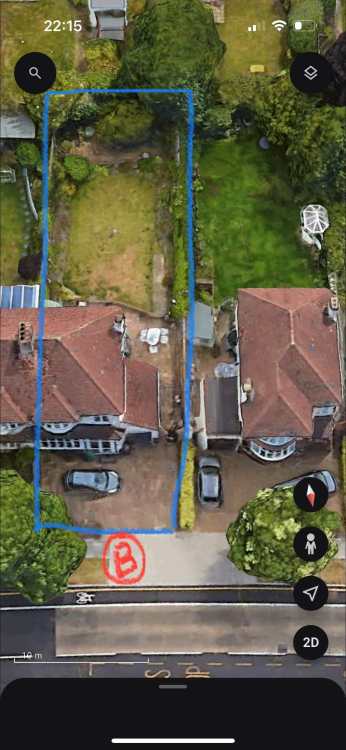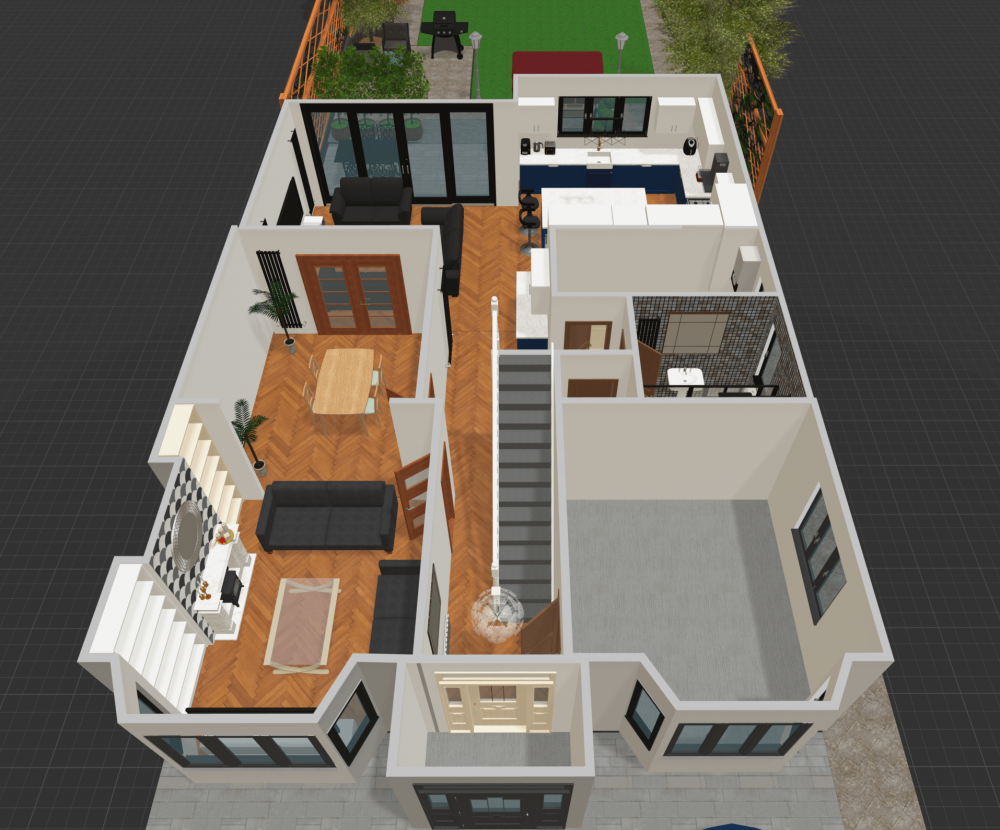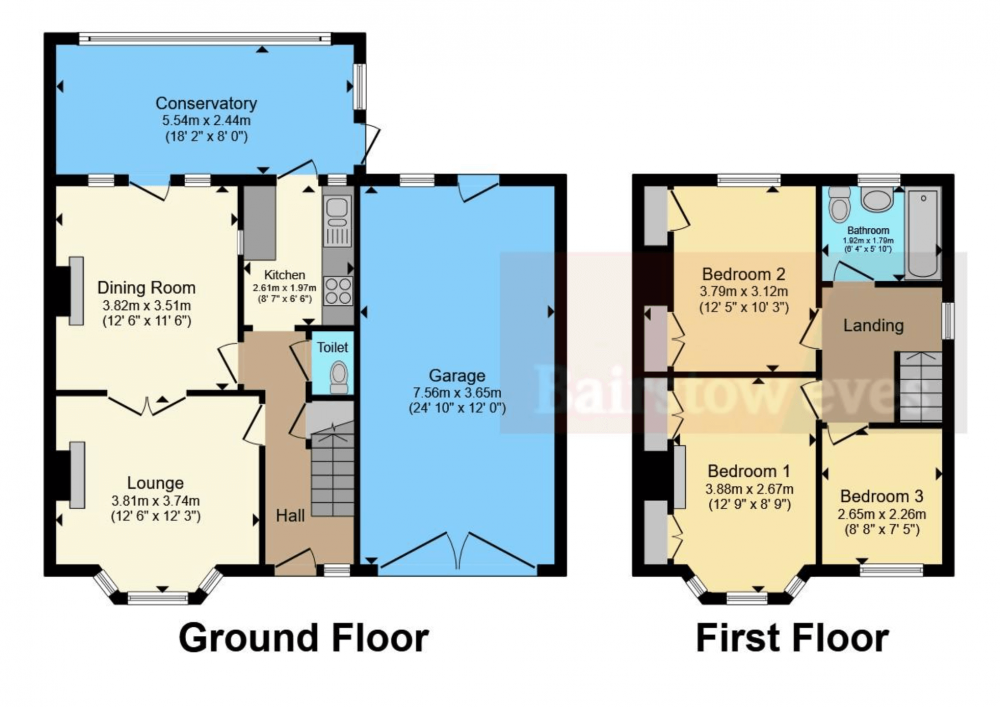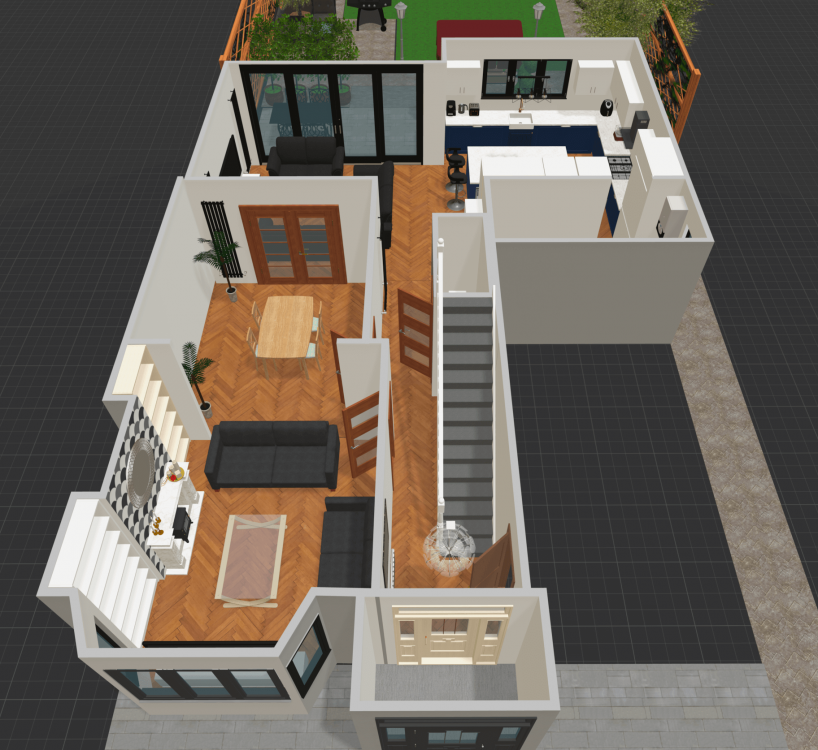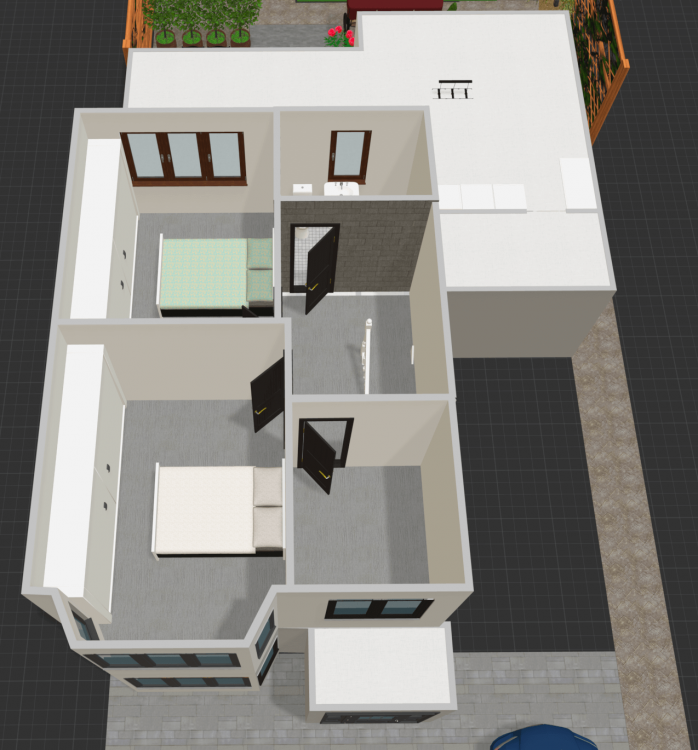Search the Community
Showing results for tags 'planning'.
-
Hi, I'm after some advice. I bought my property back in 2016, it's an old (circa 1804) single storey detached cottage/bungalow on a large plot. It's not listed, it’s not in a designated area (conservation area, national park, areas of outstanding natural beauty, world heritage site, the Norfolk or Suffolk broads) and there’s no ‘Article 4 direction’ in place. The council are however classing my property as a ‘non designated heritage asset’ (it’s a former toll house with a distinctive multi-faceted roof form). I want to extend it quite a bit, but the council don’t want me to touch it at all. I had a pre-app meeting last week and the planning officer basically said any plans that altered the original building would pretty much be refused. She did however suggest building a separate modern style building and linking it to the house with a corridor (I’m not too keen on that idea though). I really don’t know what to do now, do I proceed with plans to extend the current house (without altering the current house too much) with the view that I’ll end up having to appeal? Do I go down the permitted development route? I really don’t know what to do. Any help or advice would be greatly appreciated. Attached pictures showing site plan and current elevations.
- 5 replies
-
- planning
- permitted development
-
(and 1 more)
Tagged with:
-
We are about to purchase a new home (A) (southeast london) and had intended to buy the first one, chalet style house, and in advance of purchase reached out to the neighbour to discuss our extension plans, however their feedback was that they would oppose both options and we are wondering from a planning standpoint if they would be able to do that. Option one we believe they do, which would’ve been to do a double side extension with a single kitchen extension at the back across the full length of the property. We can see that a double side extension would have restricted their right to light and so proposed a single side extension, a dormer on the chalet roof and the kitchen extension at the back. However, they stated that they would still oppose this as it would affect their light on the driveway to the left of our proposed property. Do you feel that they would be justified in their proposal of that? If that is the case then we are thinking instead to purchase the second property (b) and maintain the original plan of a double side extension and kitchen extension to the back across the full length, where we don’t think there would be any right light restrictions and was wondering based on these images, would we be right in that assumption. Thank you for may help or guidance that you may be able to provide with this.
- 7 replies
-
- right to light
- planning
-
(and 3 more)
Tagged with:
-
Hi, We have recently moved into a property and are looking to utilise all the garden space. Currently the garden is separated by a 2m wall which we want to knock down and extend the garden into the unused space in Picture A and Picture B (yellow line depicts where the 2m wall is currently). We originally wanted to place fencing behind the small wall but pre planning advice has let us know that it will be rejected as it "will negatively impact the character and appearance of the local area". We have attached the Pre Planning Advice Response for reference. So our second thought was to knock the small wall down and erect 1m high rail fencing and plant some 2m high hedging as we know that doing both of these, should not require planning permission. However we have been advised that this will also require planning permission to change the use of the land from from private open space to private garden land. In our Deeds (Picture C) or on our Title Plan (Picture D) it does not show a separation the the two area. We then asked the council to provide where they have acquired this information from and they sent us through an image of the original landscaping plan with a clear divide (Picture E) with this email; "I have attached an extract from the landscaping plan as part of the original planning application which informed my assessment. The plan shows the dwarf wall, the planting location to the rear and then the location of your boundary fence to your garden. Similarly, the planning layouts also show a clear division between the rear garden of the properties and the current wall position. It is for this reason that I concluded that this land is used as strategic landscaping / amenity land. Your proposal would materially change the use of the land from amenity space to garden land and therefore a change of use planning application would be required." No one maintains the area, and it is full of weeds and litter. We believe it is our responsibility to maintain it but we have no access to the area and we would not benefit from putting any effort in, as we do not use or see the space. We now don't know what to do, where to start, or whether it will be futile trying to get the change of use in the first place. TIA. Pre Planning Advice Response Letter.pdf Pre Planning Advice Response Report.pdf
- 4 replies
-
- change of use
- garden
-
(and 4 more)
Tagged with:
-
Hello, this forum has been so helpful over the years but finally need some specific advice for myself. To set the scene, we are due to exchange on a house (dormer bungalow) next week, it’s the classical worst house on the best street scenario, untouched in 50 years etc - we put plans in a few weeks ago so we could hopefully get started this summer, however our local council officer has blown a hole in it. We need to try urgently find out what we can do and are probably a week away from the exchange. My architect is urgently seeking clarification from the council about what we can do, but thought a post here could help this fact finding. It’s sat in the green belt (but very built up) so she will only allow 30% / 180m3, whereas our plans are about 500m3. For context, the surrounding houses range from big to massive, and I’m confident a lot of them have done more than 30percent. Neighbour to the right has done various extensions (up and over garage + rear single storey) and our left neighbour is actually a rear neighbours back garden. I have posted the as is, and proposed front and back - we’re thinking PD might be the solution as the land around the house is big and will ensure we don’t hit the 50% limit. The new double porch on the front i think is a non starter (I know it’s not under PD), but I wondered if we could get the rest. Architect initially thoughts are: Garage we could re roof to a gable so long as it was lower than the existing ridge - aware may need to step it in towards the boundary. Would AA allow this as an alternative, or would the roof have to remain flat? Single storey rear to left can be done as within PD, and as the garage is already there it wouldn’t fall under wraparound Double storey can be done but reduced 1m to make it 3m deep - aware that the eaves may need to be dropped to the existing, but he thinks the dormer (original on house) could allow the eaves to remain as per the plans. Additional points - dormer bungalow no conservation area, no previous planning so PD rights there too We’re confident if we went in for planning for the porch and garage, they’d revoke PD so seems a non starter too Any help or advice would be most welcomed. Thank you, Cedar Cottage 2421-303 Proposed Elevations.pdf Cedar Cottage 2421-302 Proposed Elevations.pdf 24_01317_HOU-EXISTING_ELEVATIONS-7823031.pdf
-
All new to this, and already frustrated. Got our dream plot with the ugliest broken down house on it and i have submitted a design which is different to the 1970s house here. The Hamlet is not particularly thought out planning wise and as the village dates back to domesday I thought it would be nice to insert an appropriately proportioned 17century farmhouse design. Well, they want a dormer and I dont want one as its not in keeping with the farmhouse of 17 century, apart from losing floor space and the blooming maintenance, that together with there is not one dormer in the road. What on earth?? Architect says we will have to give them one. Well thats like hanging a chandelier in a toilet cubicle, it just isnt right. Can they insist, it seems mean given this house is falling down and trust me its ugly and 70s and yet they seem to want another eyes sore to replace the already hated house in the hamlet by the natives. Any tips how I can stop this silliness? TIA FF
-
Hi, I now have a design for the screen structure (see image below) that I want to build in the corner of the garden. I've been trying to find the planning rules for this type of structure but cannot find any. Can someone point me in the right direction please? I have found lots of different bits of info regarding max height etc but nothing definitive from planning portal website. If someone could provide a link to the definitive info that would be great. Many thanks, Ed
-
I am looking into the idea of doing a self-build and trying to get an idea of the costs involved before actually committing to it (e.g. by buying land or paying architect fees). I would like to know if the whole thing is at all feasible before investing a bunch of money in it. I have seen all the usual £/m² estimates, but these seem to vary quite a bit and don't always include all of the associated costs (e.g. architect/SE fees, applications, warranties/insurances etc.), so I'm wondering if there's a way to get a more accurate idea of costs at this stage of the journey, or is this just what people go on to start with and only get more accurate estimates as the build progresses, e.g. after land is purchased and designs are drawn up by an architect etc.? I have seen cost estimating services such as estimators.com mentioned in this forum, but it seems that these require designs which I presume would only be done much further into the project and after already having invested quite a lot of money. Any tips for how I should go about initial budgeting/estimating would be greatly appreciated 🙏
- 23 replies
-
- self-build
- budget
-
(and 2 more)
Tagged with:
-
I have a bungalow with what I am guessing is called a staggered/stepped front elevation (ie the front room sticks out well beyond the front door/porch by maybe 10-15ft). Does anyone know if I am allowed to extend the recessed part of the front to bring it inline with the currently furthest point so its all one flat wall - technically i wont be extending in front of the building line so should be permissable?
-
Is anyone aware of any planning legislation that precludes the demolition-to-the-ground of a building (in this case barn) that's being converted? VAT Notice 708 Section 3.2.1 lays out the criteria under which new construction can be eligible for zero-rating. One type of qualifying building is where any previous building is demolished to the ground before new construction takes place. Whilst we're still going through planning, the previously-approved scheme included the description "existing buildings to be demolished". The barn in question is a non-designated heritage asset and the internal frame will likely need to be retained, however the most sensible route is to take it down, treat it, and re-erect it. If there is a point when no above-ground part of the building is still standing, then it seems clear that this is new construction and can therefore be zero-rated (otherwise why the provision detailing under what circumstances it's okay to zero-rate when there was a prior building?). However, is there some general planning rule or regulation that would consider it a breach of consent if a converted building was entirely taken down for some period of time? I've got a vague recollection of a potential main contractor telling me about a barn conversion that he was working on where they had to take down half the barn, build the new half, then take down the other half, and then build that and join it up. The purpose was so the original building was never completely taken down, but I can't remember if that was down to some specific planning condition on that site, or because of a general principle. Any thoughts? Ta in advance.
- 11 replies
-
Hello! I don’t know whether anyone would be able to help - I cannot find any information anywhere! We live in the South Downs National Park and our house has about an acre of ‘amenity land’. I’ve been told we’re not allowed to remove the fence separating it from our garden, or to turn it into ‘garden curtilage’. BUT I can’t find anything that formally states what you can and can’t do. I’d really like to put a play area on it for our kids but have no idea whether this would be acceptable? VERY grateful for any advice, thanks! Ben
- 12 replies
-
Hello everyone, Looking for some advice if anyone has had to deal with this before them selfs, planning have come back with we had to agree to a condition to be added to our planning saying we will submit a landscape design and planting plan... see email text below "I noticed a number of trees had fell during a recent site visit to the site. On further consultation with Argyll and Bute Councils Biodiversity Officer, she has confirmed that the site is located out with the Ancient Woodland, which was highlighted as a constraint near the site. What the biodiversity officer has requested in regard to the proposal is that a Landscape Design and Planting Plan is conditioned with the planning permission and suggests some native trees in a grouping, to what is established south of the boundary to help balance out the loss of the woodland and settle the proposed dwelling house into the landscape. " does anyone know how detailed this needs to be, or anyone we can contact that could help us with this or is it something we could just sketch ourselfs to keep them happy? best regards, David
-
Hi All, I am looking to carry out a 2 storey wrap around extension. My next door adjoining neighbour has something similar, the only slight difference is a step back from my boundary by about 2m. Therefore, the rear extension that they have is not full width I presume that they have done this to pass the 45 degree rule as I do not have an extension at present. But I am presuming that as they have an extension, I can do a similar rear extension but mine will be across the full width of the house. Will this pass planning , as my neighbour has a somewhat similar extension? Thanks
-
I think we've got our heart set on building somewhere in open countryside, with beautiful scenery (and limited neighbours!) Although new to self-building, I am under no illusions that securing planning permission is going to be very challenging, particularly when outside of a settlement boundary. After a couple of nights reading and researching, it seems that a route which would offer a chance of success (apart from knocking down and replacing an existing dwelling already in open countryside), is to apply for planning under Paragraph 80 of the National Planning Policy Framework: "Paragraph 80 of the National Planning Policy Framework (NPPF) provides exceptional circumstances for permitting the construction of isolated dwellings within the countryside. if it is truly outstanding, reflecting the highest standards in architecture, and would help to raise standards of design more generally in rural areas; and would significantly enhance its immediate setting, and be sensitive to the defining characteristics of the local area." I've seen a couple of posts with examples on here, including the stunning design below. - so looks like it can be done. Being realistic...am I chasing a pipe dream here? I am all ears for advice and even alternative suggestions on how to proceed.
-
Hi. I have engaged architect now for my self build project. We appoint the architect who came at the top of the cost as we liked some of his work. He designed two house on the same street as demolish and rebuild. These are pretty big houses around 450sqm or more. On the basis of his experience with the same council and familiarity of the road as well as the design he has done (some of which award winning), we appointed him. His cost is slightly more than 15k including Buildings regs and tendering. I am pretty hands on with arranging things myself so Measured building survey/topo/bats survey/CCTV drainage survey has all been done so he would not need to do anything even in terms of tendering. Please could you advise how to achieve best value for each pound I spend on planning and design as well as tendering process. Tendering process only makes sense if he organises tenders from sub trades as no point asking for tenders from a builder as I can do that myself so dont see any value in that. Any feed back and thoughts would be greatly appreciated.
-
Hi there, this is my first post. I'm seeking some advice on how I go about planning my home extension. I am buying a 3 bed semi which is need of a complete gut out. We would like to do a double side + rear extension. I have an initial budget of approx £110k +£20k contingency to spend now in order to get the house ready to move in. I had a builder suggest phasing the refurb+build as the £130k probably wouldn't get us the whole double side + rear extension we're looking to do. I'm speaking to an architect about it to give us some options, but I'd love to get some advice and second opinions from experts on the forum that have done projects like this before. My main questions are How would you phase the build, given the initial budget will only stretch so far and we want to move in ASAP? Structurally, what do we need to consider with each phase if we took this approach? Roughly, do our budgets sound about right? Current floor plan Proposed phase 1 ground and first floor Refurb inside (new electrics, plastering, plumbing, boiler, floor, heating, doors, windows) Knock down existing garage and leave empty (building foundations for future phase) Rear extension approx 45m/sq (kitchen/diner + utility space) Proposed phase 2 Double side extension Build over existing rear extension for part double rear Loft - not part of design
-
Hi All. I know this forum is for selfbuild house but I need some advice from you experienced people in terms of if the planning design is most appropriate most value for money option. The property is detached house with c 0.25 acre of plot and was previously used as a care home but it is currently used as 7bed HMO and has Sui Generis planning permission and HMO licence. Current value is based on income multiple based on the number of rooms so theoretically number of rooms go up, the value also go up. Hence in that basis I am planning to increase the rooms from 7 to 11 or 12 (if possible). One option was to rebuild one bed flats units but I was not sure numbers of flats I would have achieved in there and the cost of entire rebuild meant that I went with additional rooms. I did some alterations/remodelling/refurbishment in 2019 and ended up spending c125k including finance costs. It included new plumbing/electrics small utility extension, hence I did not want do radical changes in remodelling option but I think if I can recoup that via further increase in the value from rebuild of flats I might treat that 125k as sunk cost with a heavy heart but that would mo doubt hurt. I attach the exisiting and proposed plan for remodel/extension option and would appreciate your feedback on it or if you think rebuild would be more suitable as flats then happy to consider that as well. Thanks.
-
This is an interesting one for my fellow planning eager beavers...in essence: we submitted a Non-Material Amendment, to PP already secured the LPA are required to determine all NMAs within 28 days, per the info below, no longer period was agreed in writing so the 28 days stands they have missed this date, wildly, by fully 4 months with a normal app, one would then have the recourse to go to appeal via the planning inspectorate, but no such recourse exists for NMAs: you cannot appeal them begging the question: what is the "penalty" to the LPA for failing to determine this NMA in time? Can this be leveraged at all? Are the non-material amendments we've made now, automatically, lawful as a result of the LPA failing to meet the 28 day deadline? "The time period for determination of a non-material amendment is 28 days, unless a longer period has been agreed in writing between the parties." "There is no right of appeal for refusal or non-determination of non-material amendment applications. If they are refused then the applicant would have to submit a S73 application or a new planning application instead." https://planningaid.zendesk.com/hc/en-us/articles/360011256758-Non-Material-Amendments-to-an-existing-planning-permission-section-96a-
- 17 replies
-
- planning
- planning permission
-
(and 1 more)
Tagged with:
-
The viewpoint used to decide items is a balance between the outlay cost and the running costs. This system will not be the cheapest way to produce heating and hot water nor the most expensive installation system but a balance related to the existing equipment and personal requirements. BEST ADVICE: Read the manual of the product you are proposing to use BEFORE you buy, especially regarding the installation and check that it will work for you. Choosing the ASHP: The size of the ASHP was determined by the heat loss calculated and the peak heat demand when the outside temperature is -8C. This resulted in the requirement of a small ASHP. We did not want an all singing all dancing system, but one that would combine with the existing central heating radiators/hot water tank and MVHR. An air to water ASHP was chosen to be able to use the existing central heating radiators already installed. The radiators are too small to produce enough heat at the lower running temperature of an ASHP so water coils are being installed in the MVHR system. The other alternative would have been to replace the radiators with larger ones as the existing ones are almost all single panel which could be replaced with double panel to increase the heat output. This option is going to be held in reserve depending on the effectiveness of the water coils in the MVHR ducts. The ASHP was chosen for it minimum working temperature of -20C and the fact that it had an inverter. An inverter heat pump uses a variable speed compressor which modulates its output increasing or decreasing its speed to match exactly the heat demand requirements of the building as the outdoor air temperature changes. This makes for a more efficient output. Because the bungalow is on the edge of an estate we wanted have a low noise unit. The unit installed is listed as 46 and 60db. I think that means 46db when running at lowest and 60db when flat out. (I'm sure someone will tell me). With the distance from walls and other properties this is well within MCS requirements. Because the bungalow suffered from strong solar gain in the summer the choice was made to install an ASHP with cooling. ASHP - planning, MCS: In order to avoid requiring planning permission the decision was taken to install the ASHP under the permitted development rules. The only position where the ASHP unit could be situated within the rules was on the flat roof. Because the flat roof has 200mm of PIR and the ASHP unit is about 88kgs concern has been raised that the vibrating motion may erode the PIR over time. The decision was taken to install and monitor the out come. The positioning gives an open run of air to the unit, but far enough from neighbours to hopefully avoid problems. Its. not perfect because during the summer it is exposed to the full sun. We hope to mitigate this when cooling the building by using the PV energy to run the ASHP. The theory being: Summer=hotter sun=more electricity produced= more power to produce cooling using the ASHP. ASHP pipework: The shorter the pipework between the ASHP and the thermal envelope of the building the more efficient. The greater the pipe insulation the more efficient. The shorter the pipework between the ASHP and the hot water tank/ heating system the more efficient, especially to/from the hot water tank as the water temperature is usually higher. ASHP connections: The pipework required is 28mm for this ASHP all the way round through the hot water tank, through the buffer tank and back to the ASHP. We used 25mm thick insulation. Two flexi hoses were used at the ASHP end with two 28mm isolating valves. The power cable used was 6mm twin and earth. The cable size is related to the possible voltage loss not just the power required! Apparently the ASHP is sensitive to voltage loss. To be honest I think 4mm could have been used but there was a roll of 6mm purchased for the PV with enough excess, so this was used. A suitable fuse was required which needed to be a MCB or RCBO Type C 20amp with this ASHP. A RCBO was installed. The control of the ASHP is via a Carel LCD "user-friendly" interface Controller and various electrical links. (More later as this develops...) The 3 port valve is a 3 Port Diverter Valve not a 3 port mid-position valve. The mid-position would allow water from the ASHP to go both to hot water and heating at the same time. However the temperature of the water flowing to heat the hot water tank is expected to be different to the temperature of the water flowing to the heating/cooling. The water side of the system will require antifreeze. so the volume of the water will need to be calculated... Please let me know what else I have forgotten...
-
planning Planning in principle before I purchase the land
Dave_madl posted a topic in Planning Permission
Can anyone help with some advice, I have a plot of land I have been offered to purchase to start a self build, it doesn't have any planning etc on it, so is it possible to apply for planning in principle in argyll (scotland) on the land myself to get that decision atleast before dealing with solicitors etc and purchasing it. I do have site plans -
Hello All, newbie here! I have an issue with a neighbouring property and I wondered if any of you have had a similar experience that could shed some light. The site in question is adjacent to my property and is contiguous to 2 others. Historically (past 30+ years) this site has had 2 buildings on it, which were used for a workshop and garage for the owner who lives in a house on the opposite side of the (adopted) road – ie. not a contiguous property. In 2015, these two buildings were included in an application for a new dwelling on the site, which was approved with the existing garaging and workshop/storage utilised in that development. The development is in a conservation area and won favour by being an eco-friendly and low energy property, buried into a hillside with a grass roof etc., and specifically repurposing the existing buildings as garaging. What then happened is that the land owner split the plot, and sold only the part with the new dwelling to a self-builder, and retained the existing buildings which formed the garaging and workshop in the approved permission. He has subsequently had 2 attempts to gain permission for a dwelling on the remaining part of the site with these existing buildings, together with an appeal, but so far, he has not been successful. The self-builder is now close to completion of the new dwelling, and is about to put through a planning change for the reduced site area, a new garage and other minor amendments made along the way. The planners seem to be accepting that when presented with the application, they will have very little option but approve the amendments and reduced site area, which we find very worrying. Having looked online I have found a couple of references to the ‘red-line’ site area on a planning application as being fundamental and cannot be reduced or indeed increased without a whole new/full application and proper consideration. Both myself and another contiguous neighbour bought our properties post this approval being granted and expected a single dwelling to be built between us. To now find that the same property will be built on a compromised site and potentially another dwelling on the retained land is very upsetting. This particular neighbour’s property is grade 2 listed, which we hoped would carry some weight in this matter. Any thoughts or advice on this would be very helpful and appreciated.
-
Hello all Having applied for a lawful development certificate I eagerly awaited the determination date which was yesterday. Only yesterday did I notice the validation letter sent by the planning authority has given themselves an indeterminate amount of time in which to reach a decision. The letter states "whilst every effort will be made to ensure that a decision is reached on the application and notice given to you by the 21st of September 2021 circumstances may dictate otherwise and to avoid excessive correspondence I shall assume unless I hear from you to the contrary that you have no objection to the period being extended to enable a decision to be issued please note the above description unless I hear to the contrary within seven days of the date of this letter I shall assume that you agree to the description." I hadn't previously noticed this and am really annoyed. Besides anything else I am annoyed with myself for not noticing this before but also the principal of acceptance by silence is extremely frowned upon in legal circles as it is often used to dupe the unsuspecting. I would really value thoughts on the legitimacy of this strategy. In my view its unethical and potentially illegal, but I would value your views. TIA.
- 13 replies
-
Hi, first post but hopefully a quick and straightforward answer, so thanks in advance. had a quick search on the forum but couldn't see anything obvious where this had been discussed. we are looking to get a wraparound single storey extension on our semi detached house. Due to the odd shape of our land, the side part of the extension starts half way back so will not span the length of the house, so completely subordinate to original structure. As it's wraparound we know we will need to seek planning permission. This is fine. the question is how wide can this side part of the extension be. I see 'can be up to 50% the width of the original structure' in many places, but what isn't clear if this is a hard and fast rule, or whether it's only for PD purposes only. As we would seek planning permission can we break this 50% rule?. To put it into context, our house is 5M wide, so 50% would add a further 2.5M. Based on our own layout ideas we would want to take this nearer to 3M, but no greater. The rear would also go out to 3M. The house is only 10 years old so has no previous extensions. Thanks John
-
I would like to install a lantern skylight over the kitchen space. the kitchen's roof is lower than the rest of the house's roof. It has a very shallow slope facing the front elevation. I know that I should seek Planning Permission if the 'the alteration would protrude more than 0.15 metres beyond the plane of the slope of the original roof when measured from the perpendicular with the external surface of the original roof' Knowing that the lantern wouldn't be higher than the highest part of the original roof. can anyone help, does this mean I have to seek planning permission or this is considered permitted development?
-
permitted development Permitted or planning
Skanx posted a topic in House Extensions & Conservatories
Hi, I have put in for permitted development for an extension, read up on all the regs but got turned down as it's too long. The existing house is over 100 years with no extension built after this time. The main house is square and has a two story 6m long 3m wide room coming off back which has a courtyard to the side. I want to build over the courtyard to the side of the rear house and join onto existing annex. The extension doesn't go past the side of the main house and goes 1.4m beyond the rear wall of the house. Is the council correct in their decision or have they misconstrued my plan. The house is not covered by any local building restrictions e.g. listed or article 4. -
We're in a familiar situation to many of you, I'm sure, particularly at the moment. Our planning officer who refused our latest app told me to my face "I'm handling 90 applications currently, I simply cannot engage" (aka offer any feedback or dialogue or advice), and I cannot get him on the phone or to respond to any query emails. The council trumpet the Paid Pre-App service as THE definitive, official way of getting feedback on an app, particularly ones that have been refused. (drumroll), but this has been posted on the council's website........ Our pre-application service is currently suspended. We are only accepting new pre-applications for major development for 10 or more dwellings. If you have recently submitted a pre-application request our timescales are extending beyond the advertised response times. Any new pre-applications submitted will be returned and refunded until we are able to maintain advertised service levels once more. We apologise for any inconvenience caused and are working hard to clear existing pre-applications. So, to conclude: Path A to feedback: blocked, officer will not engage Path B to feedback: blocked, pre-app service suspended I saw on another site a quote from the Planning Portal which I now maddeningly cannot locate which essentially said: "by law LPAs must engage constructively with applicants". So with both roads to "constructive dialogue" blocked, what do I do?

